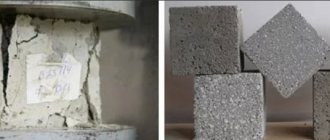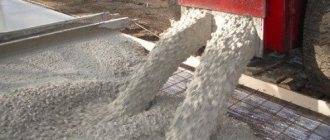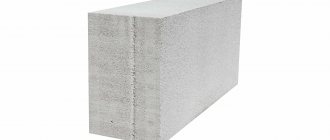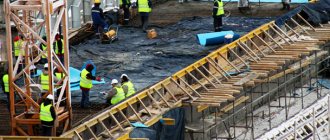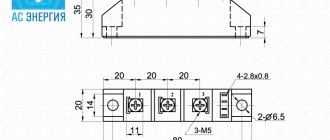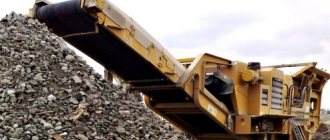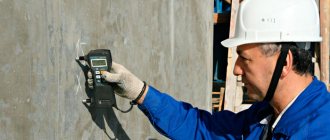general information
During construction and repair work in low temperatures, concrete heating should be used to accelerate the hardening of the concrete solution. It can be carried out using a wide variety of equipment: mats, heating panels, electrodes made of reinforcing steel, special electrodes for walls and ceilings.
You need to have special skills to carry out the procedure of heating concrete.
In order to use the concrete heating method, a person must have special skills. If the heating equipment is installed incorrectly, there is a chance that the solution will dry out in the areas where the electrodes are applied. When using such a technique, it should be taken into account that the strength of concrete as a result of heating will not exceed 50% of Rzd, because when the material dries, the construction current, and with it the heating of the concrete, stops.
The use of electric heating is justified from an economic point of view in almost any conditions, even despite the fact that there is a fairly high cost of panels for heating concrete and an increase in the consumption of reinforcing steel.
Concrete gains strength in 28 days.
The grade of concrete will be of primary importance when calculating the curing time. This is a characteristic that determines the compressive strength of a mortar. It is measured in kilograms per centimeters.
Concrete can reach the strength value stated by the brand in 28 days under normal conditions. If the temperature of the material is increased, this period can be significantly reduced. If the concrete solution freezes, the hardening process will stop, resuming only after thawing. If the concrete solution does not have time to gain 70% strength before the critical temperature drop, its grade compliance is considered lost.
b) peripheral
Brief characteristics and rational scope of application: Warming up the peripheral zones of massive and medium massive concrete and reinforced concrete monolithic structures. It is used as one-sided heating of structures with a thickness of no more than 20 cm and double-sided heating of structures with a thickness of more than 20 cm. Such structures include: strip foundations, concrete preparations and floors, flat floors and additional elements, walls, partitions, etc.
Approximate electricity consumption per 1 m3 of concrete, kW/h: 90 — 120
Note: When heating massive structures, it is necessary to maintain the temperature in the peripheral layers 5-10°C lower or at the same level as the temperature in the core. Warm-up modes are soft. The rate of temperature rise is not higher than 15°C/h. As electrodes, strips, tapes made of solid or sprayed metal are used, fixed (sprayed) onto the formwork or on special panels installed on the unformed surface of the structure (when heating concrete in structures with a large open surface).
Contact method
In the process of repair and construction work, the contact method of electric heating is most often used. In this case, heat will be transferred to the concrete solution from the surface of the wires, which heat up to 80 °C at the moment of electric current transmission. The use of this method is possible due to the good level of thermal conductivity of concrete.
Scheme of the contact method of electric heating for heating concrete.
To heat the concrete solution and achieve the required power indicators, it is best to use cables with a steel core, which allow a load of 80 watts per 1 m. Electricity costs for heating will depend on the ratio of the surface area that emits heat and the volume of the material being heated. In addition, the ambient temperature, the level of protection of the entire structure from cooling and the rate of heating of the concrete will also be important.
Contact heating requires low voltage and high current. To fulfill this condition, it is best to use special substations, for example, such as TMOB-63 or KTPTO-80. It must be taken into account that the installed power of such equipment will largely be determined by the voltage during heating.
The number of substations that will be needed at the work site will be determined by the daily rate for the volume of laying building material and the power required to warm it up. The equipment that will be needed to warm up the concrete must be installed on each grip.
Warming up concrete with PNSV wire
Heating concrete using PNSV wire is one of the most effective, simple and popular methods used by professional builders. It is widely used in practice when constructing large-scale objects in sub-zero temperatures. The essence of this method is as follows.
Before starting work, a heating cable of a certain cross-section and voltage is laid in the formwork. Next, the entire structure is filled with a liquid composition, and the cable is connected to the transformer. Heating is carried out: the wire generates heat, which is distributed evenly throughout the formwork.
For this method, a cable with a galvanized steel core is used. Its quantity depends on the cross-section, expected temperature and calculation per 1 m3 of solution. The installation diagram of the PNSV wire for heating concrete is very simple. The cable is mounted along the formwork frame so that it does not go beyond the limits, does not touch the ground and is not damaged when the solution is supplied.
Advantages of concreting with PNSV cable
- Invariance of structure. Under the influence of heat coming from the cable, the solution does not change its structure, does not bubble, does not crack, and does not form voids. The mixture sets much faster, construction or repairs are accelerated several times;
- Convenient temperature increase. Using a cable, it is much easier to smoothly increase the temperature of the solution in cold weather and create reliable, durable structures;
- Safety. Heating concrete using PNSV wire is absolutely safe. The cable itself is durable and insulated under industrial conditions, so fire is completely excluded;
- Speeds up related work. When heated by a cable, a semblance of a warm floor is formed, which warms the construction site and accelerates the solidification of other liquid materials. As a result, putty, primer, paint and glue dry faster.
Preparing to warm up
Warming up of the concrete is carried out only after the concrete mortar has been laid completely.
Preparation for the procedure can begin only after the embedded parts and fittings have been laid, and the electric welding of the fittings has been carried out. Next, you should install the finished heating elements. It is important to avoid tension of the heating wires on the reinforcement frames. It would be best to lay between them. If reinforcement is not used in the structure, ready-made inventory templates should be used. After completing the installation process, the wires must be surrounded by concrete mortar so that they do not touch the wooden parts of the structure or formwork.
The process of installing heating elements is possible only after checking with a megger. The load of the phases on the low side of the substation must be uniform. The heating wire leads must have a cross-section increased by 2-3 times. If the last condition cannot be met, it is recommended to connect pieces of aluminum wires with insulation of the connection point to a plastic tube.
Concrete heating scheme.
Heating of the concrete should be carried out no earlier than the complete laying of the mortar. All heating elements must be placed in compliance with all safety requirements. In structures that are heated, holes must be made that are necessary in order to take temperature measurements. The starting current in elements that are heated should be measured during the switching process and once an hour during the first three hours of heating.
If the indicators are normal, the temperature should subsequently be measured once per shift. As a result of electrical heating, the concrete solution must gain at least 50% of the strength that was declared. In almost all cases, compliance with the most recent requirement will be determined by testing reference samples.
Transformer for heating concrete
To heat concrete, different types of transformers are used, designed for specific work. From a technical point of view, such units are identical and consist of a protective noise-absorbing casing, an active part, a control unit and a switch. They make it possible to create monolithic structures at sub-zero temperatures and significantly speed up the maturation of the solution and the time required for work.
Transformers for heating liquid concrete have different input voltages and rated power. At large-scale facilities, the simultaneous use of several units is often practiced, which further increases the speed and volume of work. This equipment can operate for a long time outdoors in a temperature range of +20°C to -45°C, which makes it indispensable in the Russian climate.
To ensure safe operation of the transformer, certain rules must be followed:
- Installation of wires and direct work with equipment should be carried out only by qualified specialists;
- It is prohibited to use the transformer in an environment where shocks, shaking, vibrations and explosions are possible;
- you cannot transport equipment that is connected to the network;
- the heating cable can be connected to the installation only when the network is disconnected;
- It is strictly forbidden to heat concrete with a transformer without grounding and a protective casing.
When selecting a heating station, it is necessary to take into account its design features and future operating conditions. A qualified choice of transformer eliminates crystallization of water, guarantees the quality of the monolithic structure and a quick delivery date.
About personnel qualifications
The process of heating concrete, electrical installation and other work related to electricity is carried out by an electrician.
Monitoring compliance with safety regulations must be carried out by an engineer who has at least qualification group 4 in electrical safety. The organization of electrical heating must comply with all the requirements contained in SNiP 111-4-80/chap.11 and GOST12. 1.013-78/ “Concrete and reinforced concrete work and electrical safety.”
All work that is necessary to warm up the concrete, for example, such as monitoring the functioning of electrical equipment, installing electrical equipment, and starting the system, must be performed by electricians who have a third or higher qualification category. Only personnel who have a second or higher qualification group may be allowed to carry out temperature and current measurements.
Personnel of other specializations who perform their work at the electrical heating station or in its immediate vicinity must be trained in all electrical safety rules. The electrical heating post must be fenced in accordance with GOST 23407-78. In addition, it must be equipped with a light alarm and well lit.
The process of connecting equipment must be carried out exclusively when the electric current is turned off.
It is very important to exclude any possibility of third parties appearing at the post while the equipment is operating. Compliance with these requirements can help avoid injuries during the work that is necessary to warm up the concrete.
b) using a heating wire
Brief characteristics and rational scope of application: heating of concrete using a heating wire embedded in the concrete. It is used for heating concrete in any structures.
Approximate electricity consumption per 1 m3 of concrete, kW/h: 80-110
Note: Heating with a heating wire installed in the concrete of the heated structure. These heaters have a temperature at contact with concrete of no higher than 80°C, and in air it can rise to 300°C.
Effect of freezing
Concrete work in winter is carried out at temperatures from 0 to +5 degrees.
When carrying out concrete work, winter conditions are not determined by calendar time. It is believed that they occur when the average temperature per day drops to +5 °C, and during the day the temperature should decrease to no more than 0 °C. If the temperature becomes negative, the water that has not reacted with the cement will turn into ice, which as a solid will not participate in chemical processes. The consequence of such a transformation will be the cessation of the process of cement hydration, which is responsible for hardening.
At the same time, internal pressure forces will arise in the solution, which are associated with an increase in water volume during freezing by approximately 9%. If the concrete structure is not yet strengthened, it will not be able to resist such forces and will collapse as a result. As the ice defrosts further, it can turn back into water, which will help restart the hydration process. However, the broken bonds in the concrete structure are not fully restored.
During the freezing process, the cement laitance will be squeezed out from the reinforcing surface. All this can significantly reduce the strength of future structures, the adhesion of reinforcement and concrete, reduce the density of the mortar, and therefore the durability of the structure.
a) using low-temperature electric heaters
Brief characteristics and rational scope of application: heating of monolithic structures using rigid electric heaters mounted in the form of plates in the formwork or flexible ones in heating mats and blankets. They are used for almost all types of structures.
Approximate electricity consumption per 1 m3 of concrete, kW/h: 100-130
Note: Heating is carried out using soft modes. Formwork or mats with built-in electric heaters must have thermal insulation on the outside to prevent large heat losses to the environment. The following heaters are used: A) tubular heating elements, tubular-rod, angle-rod, coaxial, etc.; B) flat - mesh, plate, etc.; B) strings - steel or nichrome wire, etc.
Concreting conditions
Temperature plays a big role in the strength of concrete.
If before freezing the mortar acquires a certain strength, then the processes described above will not affect it. This threshold depends on the brand. For reinforced concrete and concrete with non-prestressing reinforcement up to grade B15, it will be 50% of the design strength, for grades B15 and B22.5 - 50%, grades B30 and B40 - 30%. If the structure has prestressed reinforcement, the critical strength for all grades of concrete will be equal to 70%. For special structures that will operate under special conditions, such a threshold is defined as 100% of the design strength.
The temperature regime in which the mortar is kept during hardening is of great importance for strength gain. When the temperature rises, the processes of interaction between cement and water will accelerate, and when the temperature decreases, it will slow down. In this regard, when constructing monolithic concrete structures in winter, it is necessary to create and maintain all certain humidity and temperature conditions that enable the structure to gain the necessary strength in the shortest possible time with the least labor and energy consumption.
b) forced electrical heating of concrete in a structure with repeated compaction
Brief characteristics and rational scope of application: the concrete mixture is placed in a cold state and compacted in the formwork, and then quickly heated and re-compacted. It is used in the construction of monolithic concrete and lightly reinforced reinforced concrete structures and road surfaces.
Approximate electricity consumption per 1 m3 of concrete, kW/h: 40-60
Note: For structures with MP<6, the required strength is achieved by thermos curing. For structures with MP>6, additional heating or heating of the concrete is required.
Thermos method
Scheme of concreting using the thermos method.
This method means that the concrete mixture, which has a temperature of 15-30 degrees, should be placed in insulated formwork. The structure will gain the specified strength with the help of exothermic release of cement by the time it cools to 0 degrees and the initial heat of the concrete mixture. The amount of exothermic heat that is released when water and cement react will depend on the type of cement that is used.
When using this method to produce a concrete mixture, it is recommended to use fast-hardening and highly exothermic Portland cements.
One of the varieties of this method is a thermos with additives (calcium chloride, potassium carbonate, etc.) that accelerate the hardening process.
a) preliminary electrical heating of the concrete mixture
Brief characteristics and rational scope of application: the concrete mixture quickly heats up outside the formwork, is quickly laid, compacted while hot and covered. It is used in the construction of massive monolithic concrete and reinforced concrete structures.
Approximate electricity consumption per 1 m3 of concrete, kW/h: 40-80
Note: For structures with MP<6, the required strength is achieved by thermos curing. For structures with MP>6, additional heating or heating of the concrete is required.
